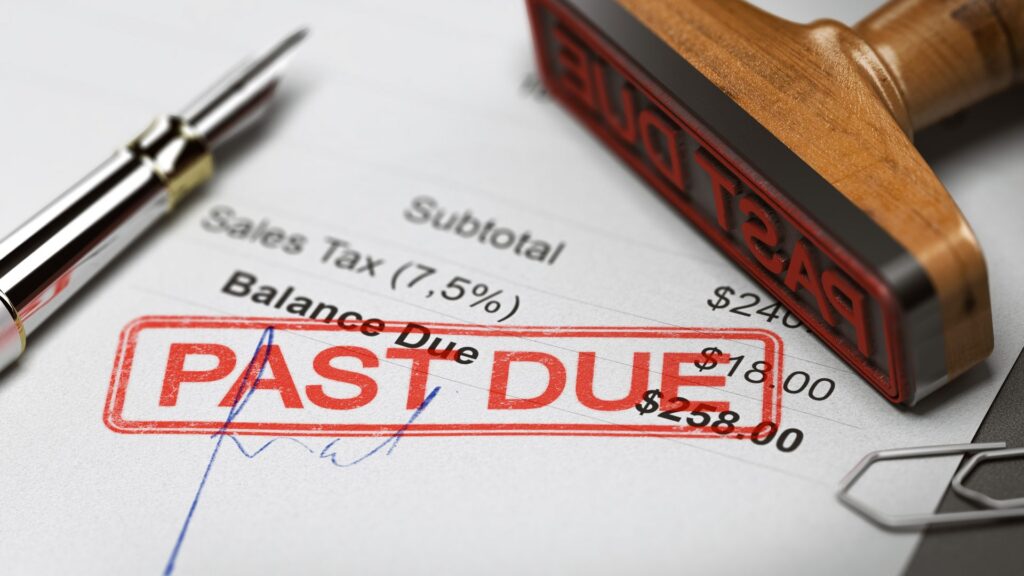What is the process for business debt recovery?
Business debt recovery may be very time-consuming and stressful without a formalised process that sets out the best approach to follow, helping to keep everything organised and under control. In this article, we’ll discuss how to create such a process and what you can do to make it more effective.
What does a business debt recovery process look like step by step?
In each industry, the business debt recovery process may look a bit different, but there are certain steps that are a foundation for each case. Utilising professional debt collection services can streamline these steps, help manage debt collection costs, and improve the chances of recovering outstanding debts. Unpaid invoices often result from various reasons, including late payment, disputes, or financial difficulties faced by the debtor.
1. Remind about the unpaid invoice
If the payment due date has passed and the unpaid invoices are still outstanding, the first step to take is to send a polite reminder. Sometimes, a delay in payment may simply be an oversight or a temporary problem with cash flow. In many cases, a reminder, also known as a dunning letter, is enough to prompt action. You can follow up with a phone call but if that doesn’t work, it’s time for the next, more formal step.
2. Put forward possible solutions for debt settlement in a demand letter
When a company still falls behind the payment, the next step is to take debt recovery action by sending a demand letter (aka Letter before Action) prepared in consultation with an attorney. It should contain debt details as well as information that if a debt is not paid off in a certain time frame, the legal proceedings shall be instituted. It should also offer the debtor a possibility to discuss solutions to resolve their debt, such as special payment arrangement plans. Usually, a debtor is given 14-30 days to make contact with you.
What is a payment arrangement plan?
Arrangement plans usually involve monthly payments agreed with a debtor until the debt is settled. This solution is beneficial both for the debtor and the creditor because it allows avoiding the costs of legal proceedings. Also, repaying the debt in small monthly instalments instead of the full amount at once may save the debtor from possible bankruptcy that would eventually make debt recovery impossible.
3. Legal claim and county court judgment
If you still don’t get paid, there’s nothing else you can do, but submit your claim to the County Court. This should be your last resort because it entails additional costs and may take quite some time if a debtor defends your claim.
As you submit the claim, the debtor is sent a notice from the court requiring them to pay the debt and interests within 14 days, potentially leading to a county court judgment if they fail to respond. However, a debtor may ignore a claim or defend it, which makes the legal proceedings more complicated and stretched over time.
What is debt defence?
A debtor may dispute or defend a claim for a debt if they disagree with it. It’s a rather rare scenario as it involves a more complicated legal process and involves higher costs. Understanding the intricacies of corporate debt recovery can help businesses better prepare for potential defenses and navigate the legal landscape more effectively.
What happens in the case of debtor’s insolvency?
When an organisation can no longer meet their financial obligations and repay debts due to financial difficulties, they become insolvent. There are legal procedures in the UK under the Insolvency Act 1986 that determine further steps of the debt collection process in such a case.
When your debtor claims insolvency, you both can try to negotiate a plan that will allow them to pay you back in manageable instalments over a certain period of time. In the UK, it’s called Company Voluntary Arrangement (CVA). If this brings no results, you can hire a third-party company that will make attempts to get as much value as possible from a debtor’s assets to repay the debt.
It’s worth noting that insolvency doesn’t equal bankruptcy. Insolvency is a state when a debtor’s liabilities exceed their assets. Bankruptcy, in contrast, is a court order that determines how an insolvent organisation can pay off their debts, for example by selling its assets to make due payments. To make a long story short: a company can be insolvent without being bankrupt, but insolvency may lead to bankruptcy in the long run.
This is how the process looks like rolled into three major steps. If it looks like a long-term, time-consuming and laborious process to you, that’s because it is indeed, especially when you have to manage many debtors at once, repetitively. When handled manually, the process may turn into true chaos. This is where automation comes in handy.
Discover DebtPro and book a free demo!
Find out moreHow to increase the efficiency of the business debt recovery process?
Debt management software takes the burden of handling the process by hand off your customer service team’s shoulders. It automates mundane and repetitive tasks and aggregates all the important data in one place, making the whole process more cost-effective and smoother.
One of the biggest advantages of debt management software is that it allows handling the process end to end: from sending the first invoice payment remainder to monitoring a debtor’s repayment progress.
However, debt management software is only as beneficial as it is tailored to your individual needs. It should seamlessly fit your workflow and allow you to leverage the power of automation and advanced analytics. These were our goals for creating DebtPro, a debt management platform that helps overcome the challenges of a debt collection process.
About the author
Transform your financial products with cutting-edge technological innovations. Contact our expert.
RECOMMENDED ARTICLES





